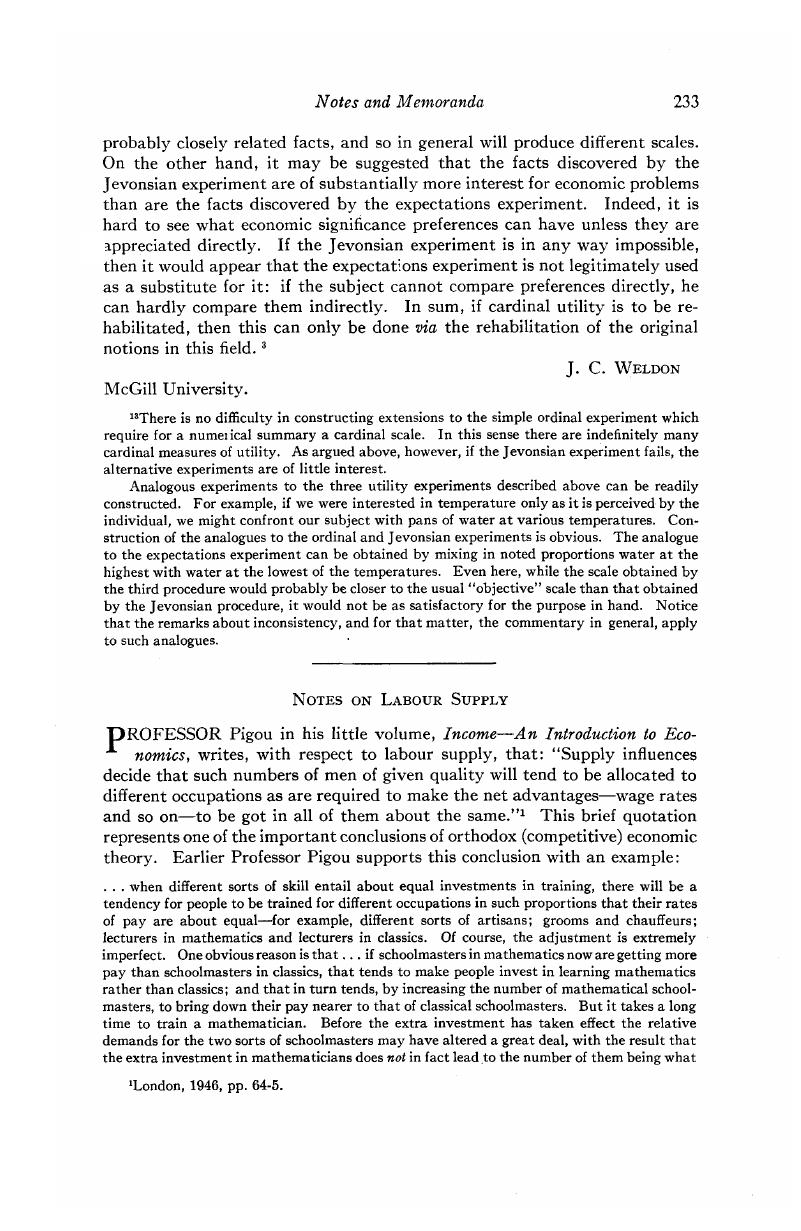No CrossRef data available.
Article contents
Notes on Labour Supply
Published online by Cambridge University Press: 07 November 2014
Abstract

- Type
- Notes and Memoranda
- Information
- Canadian Journal of Economics and Political Science/Revue canadienne de economiques et science politique , Volume 16 , Issue 2 , May 1950 , pp. 233 - 236
- Copyright
- Copyright © Canadian Political Science Association 1950
References
1 London, 1946, pp. 64-5.
2 Ibid., pp. 60-1. It should be noted that in Professor Pigou’s opinion the “adjustment is extremely imperfect.” This imperfection makes any statistical or inductive search for the principle a hopeless task.
3 The most famous discussion of the heterogeneous character of labour is probably that of Cairnes, who followed and possibly clarified Adam Smith’s contribution on this point. Recognizing that labour is not homogeneous, Cairnes, in the last century, followed by most later economists, divided labour into groups which are not competing inter sese while within each stratum all the individuals are assumed to have the identical economic traits. Smith, A., Wealth of Nations (Everyman’s, ed., London, 1910), vol. I, pp. 88–107 Google Scholar; Cairnes, J. E., Some Leading Principles of Economics (New York, 1874), pp. 656–8Google Scholar; see also Taussig, F. W., Principles of Economics (2nd ed., New York, 1920), vol. II, p. 136 Google Scholar; also Knight, F. H., Risk, Uncertainty and Profits (New York, 1921), pp. 123 ff.Google Scholar
4 The income of labour, over an extended period, consists of considerations quite divorced from money.
5 My colleague, Mr. Arthur Claydon, rightly points out that the perverse shifts of labour supplies during the cycle are essentially a family income phenomenon. It is also instructive to note that legal restraints on employment, such as minimum wage or compulsory school attendance laws, are often considered jointly with family allowances.


